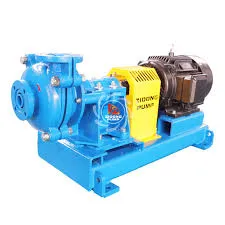-
 support@minemaxx.com
support@minemaxx.com
-
 0086-311-87833311
0086-311-87833311
 NO.8 JIHENG STREET,QIAOXI DISTRICT,SHIJIAZHUANG,HEBEI,CHINA
NO.8 JIHENG STREET,QIAOXI DISTRICT,SHIJIAZHUANG,HEBEI,CHINA
multi stage impeller
Understanding Multi-Stage Impellers Design, Applications, and Benefits
Multi-stage impellers are essential components in various hydraulic machinery, particularly in centrifugal pumps and compressors. These intricate devices are designed to enhance fluid flow and increase pressure efficiently, making them fundamental in numerous industrial applications. In this article, we will delve into the design principles, operational mechanisms, benefits, and practical applications of multi-stage impellers.
Design Principles of Multi-Stage Impellers
A multi-stage impeller consists of multiple impeller stages arranged in series within a single housing. Each stage comprises a rotating impeller and a stationary diffuser that work in tandem to convert mechanical energy into fluid energy. The design of these impellers is critical; they must be able to handle high velocities and pressures while maintaining structural integrity.
Key design aspects include
1. Impeller Shape The geometrical configuration of the impeller blades significantly impacts performance. The blades are often curved or angled to optimize fluid flow and pressure conversion.
2. Number of Stages The number of impeller stages determines the total pressure increase that the pump or compressor can achieve. More stages typically result in higher pressure outputs, but also require more energy.
3. Material Selection Given that multi-stage impellers operate under high stress and can be exposed to corrosive fluids, materials must be carefully chosen. Common materials include stainless steel, bronze, and various high-strength plastics.
4. Clearances Precise clearances between the impeller blades and the diffuser are necessary to minimize turbulence and maximize efficiency.
Operational Mechanism
In operation, fluid enters the first impeller stage, where the rotating blades impart velocity to the fluid, converting mechanical energy into kinetic energy. The fluid, now high-speed, moves into the stationary diffuser, where its velocity is converted back into pressure energy. This process occurs repeatedly with each subsequent impeller stage, allowing for significant increases in both velocity and pressure.
The compound effect of multiple stages enables a single pump or compressor to achieve higher discharge pressures than would be feasible with a single-stage device. This is especially advantageous in applications that require precise control over flow rates and pressures.
Benefits of Multi-Stage Impellers
multi stage impeller

1. High Efficiency By spreading the pressure increase across multiple stages, multi-stage impellers can achieve higher overall efficiency compared to single-stage designs. This reduces energy consumption and operational costs.
2. Versatility Multi-stage impellers are capable of handling a wide range of fluids, including those that are viscous, corrosive, or contain particulates. This versatility makes them suitable for diverse applications.
3. Improved Performance With the ability to achieve higher pressures, these systems can transport fluids over longer distances. This is particularly important in processes such as water supply, oil and gas extraction, and chemical processing.
4. Space-Saving Design Multi-stage configurations can provide the necessary pressure elevation while occupying less physical space than multiple single-stage pumps or compressors. This compact design is beneficial in environments where space is a limitation.
Applications of Multi-Stage Impellers
The applications of multi-stage impellers are vast and varied. They are widely used in
- Water Supply Systems Municipal water systems often utilize multi-stage pumps to ensure adequate pressure for distributing water over long distances.
- Oil and Gas Industry Multi-stage centrifugal pumps are essential for transporting crude oil and refined products from extraction sites to refineries and distribution points.
- Chemical Processing These impellers are used in reactors and separation processes where high pressures and controlled flow rates are critical.
- Power Generation In power plants, multi-stage pumps facilitate the movement of cooling water and other fluids essential for energy production.
Conclusion
Multi-stage impellers represent a pivotal advancement in fluid dynamics technology, offering significant advantages in efficiency, versatility, and performance. Their ability to handle high pressures and manipulate fluid dynamics makes them indispensable across various industries. As technology continues to evolve, the design and application of multi-stage impellers will likely advance, further enhancing their capabilities and expanding their uses in modern engineering challenges. Whether in water supply systems, the oil and gas sector, or chemical processing, understanding and utilizing multi-stage impeller technology is key to achieving optimal operational efficiency and reliability.
-
Wet Parts for Optimal PerformanceNewsOct.10,2024
-
Vertical Pump Centrifugal SolutionsNewsOct.10,2024
-
Top Slurry Pump ManufacturersNewsOct.10,2024
-
The Ultimate Guide to Centrifugal Pump for SlurryNewsOct.10,2024
-
Pump Bearing Types for Optimal PerformanceNewsOct.10,2024
-
A Guide to Top Slurry Pump SuppliersNewsOct.10,2024
-
Slurry Pump Parts for Optimal PerformanceNewsSep.25,2024

